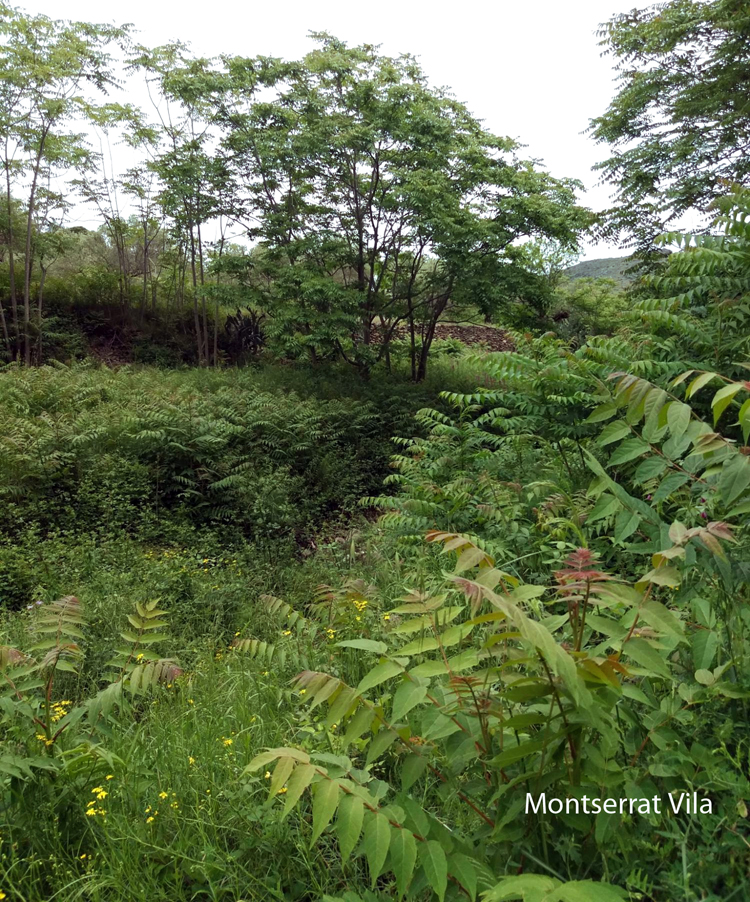Horticulture is one of the main pathways of deliberate introduction of non-native plants, some of which might become invasive. Of the 914 commercial ornamental outdoor plant species sold in Spain, 700 (77%) are non-native (archaeophytes excluded) marketed species. These species were classified into six different lists based on their invasion status in Spain and elsewhere, their climatic suitability in Spain, and their potential environmental and socioeconomic impacts. Sufficient information for 270 species was available. A Priority List of eight regulated invasive species that were still available on the market is provided. Additionally an Attention List with 68 non-regulated invasive and potentially invasive species that might cause various impacts was established. To prioritise the species within the Attention List, the risk of invasion of these species was further assessed by using an adaptation of the Australian WRA protocol and the level of societal interest estimated from values of the Google Trends tool. Three other lists were proposed: A Green List of seven species with probably no potential to become invasive, a Watch List with 27 potentially invasive species with few potential impacts, and an Uncertainty List with 161 species of known status but with insufficient information to include them in any of the previous lists. For 430 (61%) of the marketed non-native plant species no sufficient information was available, which were compiled into a Data Deficient List. These findings of prohibited species for sale highlight the need for stronger enforcement of the regulations on invasive plant species in Spain. In addition, our results highlight the need for additional information on potential impacts and climate suitability of horticultural plants being sold in Spain, as insufficient information could be found to assess the invasion risk for a majority of species. informacion[at]ebd.csic.es: Bayon & Vilà (2019) Horizon scanning to identify invasion risk of ornamental plants marketed in Spain. NeoBiota 52: 47–86 (2019). DOI: 10.3897/neobiota.52.38113
https://neobiota.pensoft.net/article/38113/








 Las altas temperaturas están provocando que las lagunas y las marismas de Doñana pierdan agua rápidamente
Las altas temperaturas están provocando que las lagunas y las marismas de Doñana pierdan agua rápidamente



